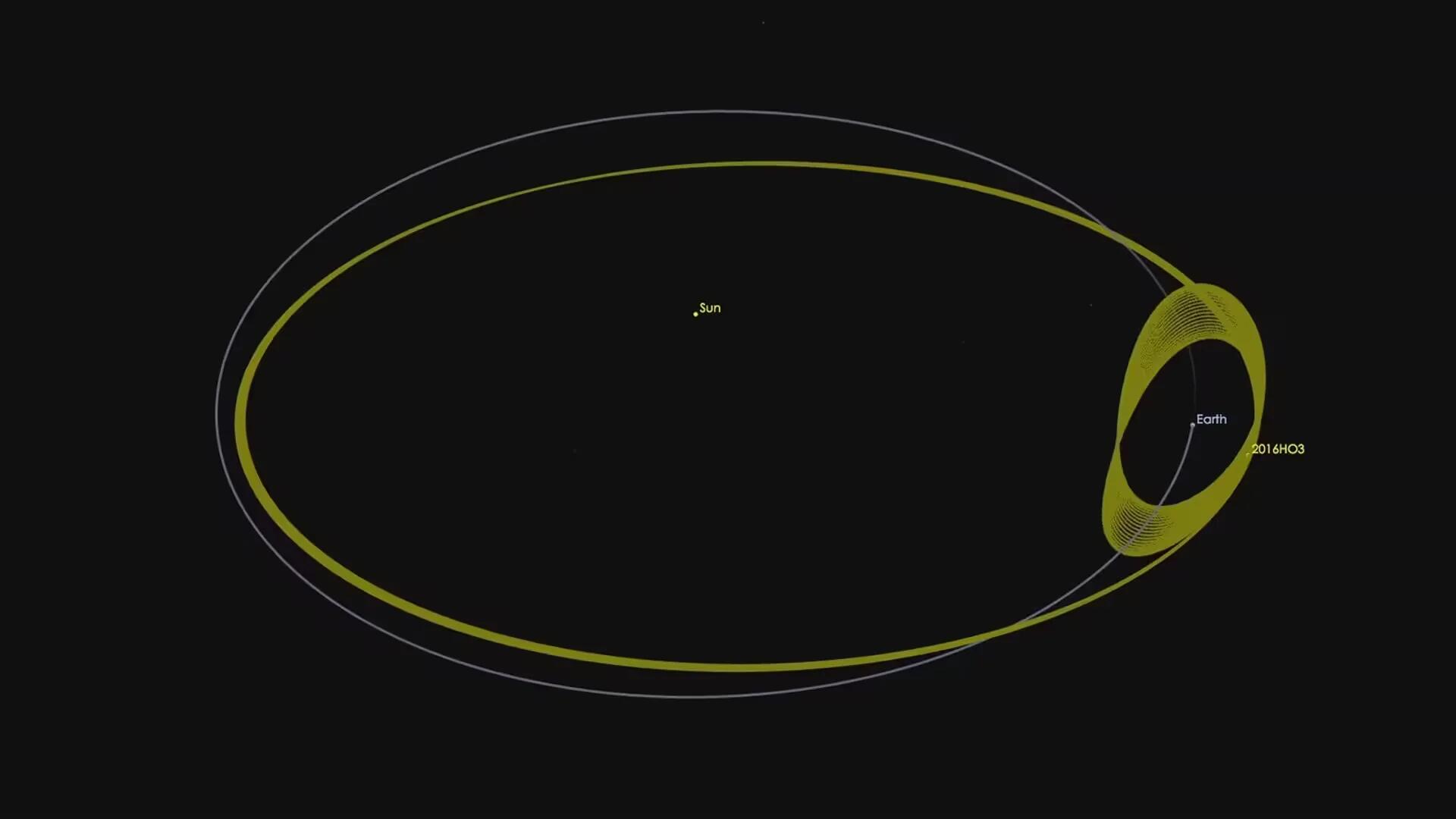Scientists has discovered a small asteroid in orbit around Sun. This new companion circles around the Earth as it orbits the sun, and it seems like it is going to be our companion for next few centuries.
The newly discovered asteroid named 2016 HO3, is actually in orbit around the sun. However, the new asteroid is much more locked onto us, making it appear to circle around Earth as well.
This newly found asteroid is far too distant to be considered a true natural satellite of our planet. Therefore, this asteroid is called as a quasi-satellite, or near-Earth companion.
Due to the small size and distance from Earth, you cannot see the Asteroid 2016 HO3 with your naked eye. To see the asteroid you might need a powerful telescope and knowledge of the orbit to spot it.
This is not the first quasi-satellite to orbit Earth. One other asteroid, the 2003 YN107 followed a similar orbital pattern for a while over 10 years ago, but it has since departed our vicinity. Compared to 2003 YN107, the 2016 HO3 is much tightly locked on to us with a much stable orbit. This means it will continue to follow out little blue planet for centuries to come.
Since 2016 HO3 loops around our planet, but never ventures very far away as we both go around the sun, we refer to it as a quasi-satellite of Earth.
One other asteroid — 2003 YN107 — followed a similar orbital pattern for a while over 10 years ago, but it has since departed our vicinity. This new asteroid is much more locked onto us. Our calculations indicate 2016 HO3 has been a stable quasi-satellite of Earth for almost a century, and it will continue to follow this pattern as Earth’s companion for centuries to come.
As it orbits the sun, asteroid 2016 HO3 spends about half of the time closer to the sun than Earth, and passes ahead of our planet. The other half of the time it falls behind.
The asteroid has a tilted orbit, which causes it to weave up and down on the orbital plane making it look like it was “in a little dance with Earth”.
The asteroid’s loops around Earth drift a little ahead or behind from year to year, but when they drift too far forward or backward, Earth’s gravity is just strong enough to reverse the drift and hold onto the asteroid so that it never wanders farther away than about 100 times the distance of the moon.
The same effect also prevents the asteroid from approaching much closer than about 38 times the distance of the moon. In effect, this small asteroid is caught in a little dance with Earth.
Scientist first found the Asteroid 2016 HO3 in late April with the Pan-STARRS 1 asteroid survey telescope in Hawaii. Due to the distance, NASA was not able to give a firm measurement on the size of the asteroid. However, initial calculations reveals that it is likely larger than 120 feet (40 meters) and smaller than 300 feet (100 meters).
